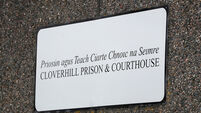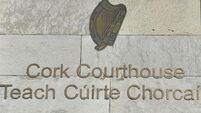Nightmare in Nairobi with no daylight on the horizon
A BROKEN cot, mud-stained rugs and torn sacks with her children’s clothes are the precious few belongings Aunice Odhiambo still has after she and her family were run out of their slum home by armed roaming gangs.
Clinging to her children, the young mother describes how a week ago, a crowd of 50 teenagers and men carrying pangas and machettes surrounded her small shack in the Kariobangi slum, in east Nairobi.
As dusk settled, mobs of Kikuyu tribesmen loyal to the re-elected president, Mwai Kibaki, were driving out and attacking Luos, tribal supporters of opposition leader Raila Odinga.
“Guys searched buildings and asked what tribe you belonged to. Then they would take away young boys,” said the mother.
Wiping her eyes, Aunice explained how her first-born, 19-year-old Edwin, was dragged away, beaten and hacked with machettes.
“The Kikuyus were taking away young boys to kill them. They left him [Edwin] alive but with deep cuts.”
Aunice fled her home with her children and what items she could carry. Now the family of five sleep in the grounds of the nearby Ruraraka police station, along with more than 300 others seeking refuge.
Burnt-out cars, abandoned looted buses and benches have all become makeshift room and beds in the police yard.
This individual story of tragedy is being played out across the slums of Nairobi where more than one million people, already living on the edge, face angry armed mobs roaming the dusty streets. Some seek revenge, others are allegedly being paid for the brutality. Ethnic conflict following last month’s election is being blamed for the violence.
Irish charity Concern says 270,000 people are displaced across Kenya since the election a month ago on December 27. Heightened expectation, before the results eventually emerged, saw voters ready to explode, explained Concern’s country director Mary O’Neill.
“It was like a spark to fire. There were past injustices over land among other things, and the unemployed were expecting a lot.”
Tensions, already in the slums because of conditions, meant they were the first and worst to suffer.
Despite a brief calm before former UN secretary-general Kofi Annan’s arrival in Kenya to negotiate peace, tensions are still rising.
“The longer the violence goes on, the deeper the rift in communities. Where mixed tribes live beside each other, it’s now neighbour against neighbour,” added Ms O’Neill.
Significant reports of rape and intimidation, as well as reported beheadings are some of the horror stories emerging from the squalor of the slums.
While displacement only affected a few thousand people, mainly from Somalia and Sudan before the election, charged situations in urban ghettos are forcing already destitute families to flee.
IN KIBERA, the largest slum in sub-Saharan Africa, where more than 750,000 people live, charred tyre burn marks cover the road, the burnt remains of a church lie hidden behind a tree, while giant barrels from a destroyed petrol station act as improvised road blocks. These sights are additional to the mounds of rubbish mixed with human excrement piled on the narrow streets.
My eyes followed the corrugated skyline across slum roofs to a polluted river where children wash clothes and urinate side by side.
Outside of Kibera, hundreds of families have taken refuge in the Jamuhuri showground and sports arena. The mainly Kikuyu families, sipping porridge from the Red Cross, explain why they are sleeping in the stands.
“We don’t know where to go,” said mother-of-three, Peris Wangoi, 30, who has slept on a mattress outside for three weeks.
Nancy Waljiru, 39, described how her mother was beaten before she was run out of her slum home. She still has hope though.
“When enemies close the door, God can open it for you,” she says.
Others agree, despite dangerous odds. Fr Paulino Mondo runs the parish church in Korogocho, one of the most treacherous slums in Nairobi. Last week armed youths fired a poisonous metal-tipped arrow into his car. A similar arrow was responsible for a local policeman’s death recently.
“People had already dug in their trenches before the election. The delayed results were a bit provocative. Waiting, people became hungry, angry, and then armed,” said the priest.
Gruesome attacks have occurred just metres from Fr Paulino’s church. A man delivering milk to factories was dragged from his vehicle, beaten, burnt and his stomach knifed open. A woman, five months pregnant, was also raped in front of the church, described the priest.
“We ran outside and chased her attackers away. She lost her uterus but the child was saved,” he says. A treasured success among the dark tribal conflicts now filling Nairobi’s slums.
Locals allege landlords ran out of their rent areas are paying and sometimes arming belligerent youths. Those marching at the front of machette gangs get 500 Kenyan shillings (€4.90), while those at the back get 100.
Further into one of the slums, a stinking dump of several kilometres blackens the horizon. Eyes become sore standing at a distance from Dandora, the name of the giant dump which looms just tens of metres from a school of 900 children.
Vultures circle overhead while human scavengers search for scraps.
Kenya’s poorest face unimaginable challenges. And they have just got worse.














